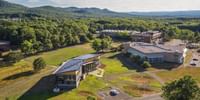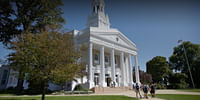Bachelor (Earth and Oceanographic Science)
4 years
On Campus
English
Field of Study:
$53,418/Yr
$53,418 /Yr
A degree in EOS opens up a world of possibilities:
Important Dates
| Event | End Date |
| Early Decision 1 Application Deadline | Nov 15, 2023 |
| Early Decision 2 Application Deadline | Jan 5, 2024 |
| Regular Decision Application Deadline | Jan 5, 2024 |
Eligibility & Entry Requirement
Academic Requirements:
- Submit official transcripts of high school and other education completed
- Submit official results of the national university exam of your country
- Applicants need to complete individual interviews with agents like initialview, vericant, duolingo etc
- Submit three recommendations from counselor and teacher
- Submit a secondary school report
- Submit an essay
- Submitting SAT/ACT score is optional
- Submit English Language Proficiency test scores
Ask your question
Similar Colleges You Might Be Interested In
- Similar Colleges
No Ratings Found!!
Follow
No Ratings Found!!
Follow
No Ratings Found!!
Follow
No Ratings Found!!
Follow









